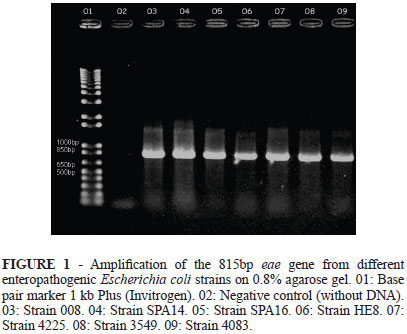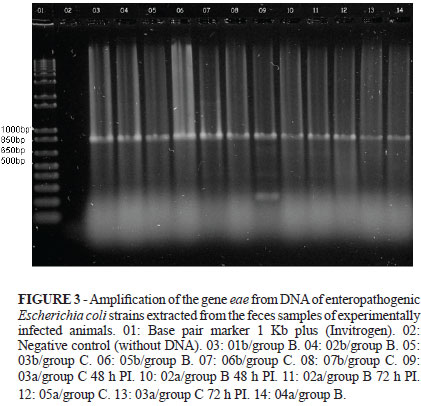PURPOSE: To verify the possibility of an experimental infection with enteropathogenic Escherichia coli and to confirm by PCR that the symptoms manifested after infection were due to the virulence factors of the studied bacteria. METHODS: Experimental units were 14 healthy pups of Boxer breed, aged 60 days. The animals were divided into three groups. One animal from each litter was included in a control group and the remaining animals were divided into two groups: one inoculated with strain 4083, and another one inoculated with strain SPA14. Gelatinous capsules coated with enteric-coating solution were used for the inoculation of strains. E. coli isolation from feces was performed for all tested animals, and the extracted DNA was subjected to Polymerase Chain Reaction (PCR). RESULTS: All infected animals presented diarrhea and had the gene eae amplified by PCR. CONCLUSION: The efficiency of PCR for the studied strains indicates that this technique can be recommended for the diagnosis of enteropathogenic Escherichia coli as a differential from other pathogens causing diarrhea. It may also be used in the future to verify whether other virulence factors (bfpA gene and EAF plasmid) persist after infection and to assess the pathogenicity of these bacteria.
Enteropathogenic Escherichia coli; Virulence Factors; Polymerase Chain Reaction; Dogs





